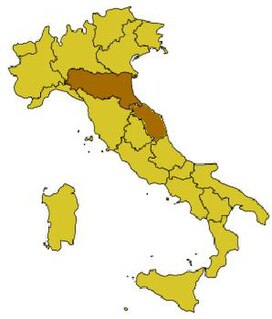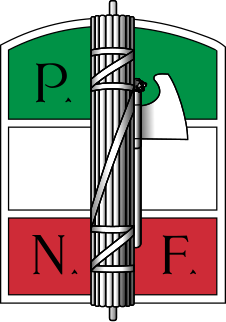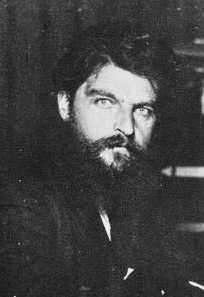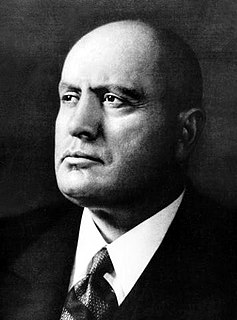Related Research Articles

Fascism is a form of far-right, authoritarian ultranationalism characterized by dictatorial power, forcible suppression of opposition, and strong regimentation of society and of the economy, which came to prominence in early 20th-century Europe. The first fascist movements emerged in Italy during World War I, before spreading to other European countries. Opposed to liberalism, democracy, Marxism, and anarchism, fascism is placed on the far right within the traditional left–right spectrum.

Duce is an Italian title, derived from the Latin word dux "leader", and a cognate of duke. National Fascist Party leader Benito Mussolini was identified by Fascists as Il Duce of the movement since the birth of the Fasci Italiani di Combattimento in 1919. In 1925 it became a reference to the dictatorial position of Sua Eccellenza Benito Mussolini, Capo del Governo, Duce del Fascismo e Fondatore dell'Impero. Mussolini held this title together with that of President of the Council of Ministers: this was the constitutional position which entitled him to rule Italy on behalf of the King of Italy. Founder of the Empire was added for the exclusive use by Mussolini in recognition of his founding of an official legal entity of the Italian Empire on behalf of the King in 1936 following Italy's victory in the Second Italo-Ethiopian War. The position was held by Mussolini until 1943, when he was removed from office by the King and the position of "Duce" was dismantled, while Marshal Pietro Badoglio, 1st Duke of Addis Abeba was appointed Presidente del Consiglio.

The March on Rome was an organized mass demonstration in October 1922 which resulted in Benito Mussolini's National Fascist Party (PNF) ascending to power in the Kingdom of Italy. In late October 1922, Fascist Party leaders planned an insurrection, to take place on 28 October. When fascist demonstrators and Blackshirt paramilitaries entered Rome, Prime Minister Luigi Facta wished to declare a state of siege, but this was overruled by King Victor Emmanuel III. On the following day, 29 October 1922, the King appointed Mussolini as Prime Minister, thereby transferring political power to the fascists without armed conflict.

Michele Bianchi was an Italian revolutionary syndicalist leader who took a position in the Unione Italiana del Lavoro (UIL) He was among the founding members of the Fascist movement. He was widely seen as the dominant leader of the leftist, syndicalist wing of the National Fascist Party. He took an active role in the "interventionist left" where he "espoused an alliance between nationalism and syndicalism." He was one of the most influential politicians of the regime before his succumbing to tuberculosis in 1930. He was also one of the grand architects behind the "Great List" which secured the parliamentary majority in favor of the fascists.
Fascio is an Italian word literally meaning "a bundle" or "a sheaf", and figuratively "league", and which was used in the late 19th century to refer to political groups of many different orientations. A number of nationalist fasci later evolved into the 20th century Fasci movement, which became known as fascism.

Red Week was the name given to a week of unrest which occurred from 7 to 14 June 1914. Over these seven days, Italy saw widespread rioting and large-scale strikes throughout the Italian provinces of Romagna and the Marche.

Edmondo Rossoni was a revolutionary syndicalist leader and an Italian fascist politician who became involved in the Fascist syndicate movement during Benito Mussolini's regime.
The economy of fascist Italy refers to the economy in the Kingdom of Italy between 1922 and 1943, under fascism. Italy had emerged from World War I in a poor and weakened condition and, after the war, suffered inflation, massive debts and an extended depression. By 1920, the economy was in a massive convulsion, with mass unemployment, food shortages, strikes, etc. That conflagration of viewpoints can be exemplified by the so-called Biennio Rosso.

The history of fascist ideology is long and draws on many sources. Fascists took inspiration from sources as ancient as the Spartans for their focus on racial purity and their emphasis on rule by an elite minority. Fascism has also been connected to the ideals of Plato, though there are key differences between the two. Fascism styled itself as the ideological successor to Rome, particularly the Roman Empire. The concept of a "high and noble" Aryan culture as opposed to a "parasitic" Semitic culture was core to Nazi racial views. From the same era, Georg Wilhelm Friedrich Hegel's view on the absolute authority of the state also strongly influenced Fascist thinking. The French Revolution was a major influence insofar as the Nazis saw themselves as fighting back against many of the ideas which it brought to prominence, especially liberalism, liberal democracy and racial equality, whereas on the other hand Fascism drew heavily on the revolutionary ideal of nationalism. Common themes among fascist movements include: nationalism, hierarchy and elitism, militarism, quasi-religion, masculinity and philosophy. Other aspects of fascism such as its "myth of decadence", anti‐egalitarianism and totalitarianism can be seen to originate from these ideas. These fundamental aspects however, can be attributed to a concept known as "Palingenetic ultranationalism", a theory proposed by Roger Griffin, that fascism is a synthesis of totalitarianism and ultranationalism sacralized through myth of national rebirth and regeneration.

The National Syndicalist Movement was a political movement that briefly flourished in Portugal in the 1930s. Stanley G. Payne defines them as a fascist movement in his typography.

Italian Fascism, also known as Classical Fascism or simply Fascism, is the original fascist ideology as developed in Italy by Giovanni Gentile and Benito Mussolini. The ideology is associated with a series of two political parties led by Benito Mussolini: the National Fascist Party (PNF), which ruled the Kingdom of Italy from 1922 until 1943, and the Republican Fascist Party that ruled the Italian Social Republic from 1943 to 1945. Italian Fascism is also associated with the post-war Italian Social Movement and subsequent Italian neo-fascist movements.

The Italian Fasces of Combat was an Italian fascist organization, created by Benito Mussolini in 1919.
Squadrismo was the movement of squadre d’azione, the fascist militias organized outside the authority of the Italian state and led by local leaders called ras. The militia originally consisted of farmers and the middle-class people creating their own defense against revolutionary socialists. Squadrismo became an important asset for the rise of the National Fascist Party led by Benito Mussolini, using violence to systematically eliminate any political parties which were opposed to Italian Fascism. This violence was not solely an instrument in politics, but was also a vital component of squadrismo identity, which made it difficult for the movement to be tamed. This was shown in the various attempts by Mussolini to control squadrismo violence, with the Pact of Pacification, and finally with the Consolidated Public Safety Act. Squadrismo, which ultimately became the Blackshirts, served as a source of inspiration for Adolf Hitler’s S.A.

The National Fascist Party was an Italian political party, created by Benito Mussolini as the political expression of Italian Fascism and as a reorganization of the previous Italian Fasces of Combat. The party ruled the Kingdom of Italy from 1922 when Fascists took power with the March on Rome until the fall of the Fascist regime in 1943, when Mussolini was deposed by the Grand Council of Fascism. It was succeeded, in the territories under the control of the Italian Social Republic, by the Republican Fascist Party, ultimately dissolved at the end of World War II.

Fascism in Europe was the set of various fascist ideologies which were practiced by governments and political organizations in Europe during the 20th century. Fascism was born in Italy following World War I, and other fascist movements, influenced by Italian Fascism, subsequently emerged across Europe. Among the political doctrines which are identified as ideological origins of fascism in Europe are the combining of a traditional national unity and revolutionary anti-democratic rhetoric which was espoused by the integral nationalist Charles Maurras and revolutionary syndicalist Georges Sorel in France.

Nicola Bombacci was an Italian Marxist revolutionary. He began in the Italian Socialist Party as an opponent of the reformist wing and became a founding member of the Communist Party of Italy in 1921, sitting on the fifteen-man Central Committee. During the latter part of his life, particularly during the Second World War, Bombacci allied with Benito Mussolini and the Italian Social Republic against the Allied invasion of Italy. He met his death after being shot by communist partisans and his body was subsequently strung up in Piazzale Loreto.

Benito Amilcare Andrea Mussolini was an Italian politician and journalist who founded and led the National Fascist Party. He was Prime Minister of Italy from the March on Rome in 1922 until his deposition in 1943, and "Duce" of Italian Fascism from the establishment of the Italian Fasces of Combat in 1919 until his execution in 1945 by Italian partisans. As dictator of Italy and founder of fascism, Mussolini inspired and supported the international spread of fascist movements during the inter-war period.
Cesare Rossi was an Italian fascist leader who later became estranged from the regime.
Events from the year 1921 in Italy.
Fascist syndicalism was a trade syndicate movement that rose out of the pre-World War II provenance of the revolutionary syndicalism movement led mostly by Edmondo Rossoni, Sergio Panunzio, A. O. Olivetti, Michele Bianchi, Alceste De Ambris, Paolo Orano, Massimo Rocca, and Guido Pighetti, under the influence of Georges Sorel, who was considered the “‘metaphysician’ of syndicalism.” The Fascist Syndicalists differed from other forms of fascism in that they generally favored class struggle, worker-controlled factories and hostility to industrialists, which lead historians to portray them as “leftist fascist idealists” who “differed radically from right fascists.” Generally considered one of the more radical Fascist syndicalists in Italy, Rossoni was the “leading exponent of fascist syndicalism.”, and sought to infuse nationalism with “class struggle.”
References
- ↑ Stanley G. Payne, A History of Fascism, 1914-1945, University of Wisconsin Press, 1995, p. 100. Historians cannot agree on the exact signing date of the Pact
- ↑ Dahlia S. Elazar, The Making of Fascism: Class, State, and Counter-Revolution, Italy 1919-1922, Westport, CT, Praeger, 2001, p. 141
- ↑ Dahlia S. Elazar, The Making of Fascism: Class, State, and Counter-Revolution, Italy 1919-1922, Westport, CT, Praeger, 2001, p. 141
- ↑ R.J.B. Bosworth, Mussolini’s Italy: Life Under the Fascist Dictatorship 1915-1945, New York, NY, Penguin Press, 2006, p.172
- ↑ Dahlia S. Elazar, The Making of Fascism: Class, State, and Counter-Revolution, Italy 1919-1922, Westport, CT, Praeger, 2001, p. 141
- ↑ Stanley G. Payne, A History of Fascism, 1914-1945, University of Wisconsin Press, 1995, p. 100
- ↑ Stanley G. Payne, A History of Fascism, 1914-1945, University of Wisconsin Press, 1995, p. 95
- ↑ Christopher Hibbert, Mussolini: The Rise and Fall of Il Duce, New York: NY, St. Martin’s Press, 2008, p. 28. First published in 1962 as Il Duce: The Life of Benito Mussolini
- ↑ Christopher Hibbert, Mussolini: The Rise and Fall of Il Duce, New York: NY, St. Martin’s Press, 2008, pp. 28-29
- ↑ Stanley G. Payne, A History of Fascism, 1914-1945, University of Wisconsin Press, 1995, p. 100
- ↑ Denis Mack Smith, Mussolini, New York, NY, Vintage Books, 1983, p. 45
- ↑ Stanley G. Payne, A History of Fascism, 1914-1945, University of Wisconsin Press, 1995, p. 99
- ↑ Denis Mack Smith, Modern Italy: A Political History, University of Michigan Press, 1997, p. 284, first published in 1959
- ↑ Denis Mack Smith, Modern Italy: A Political History, University of Michigan Press, 1997, p. 297
- ↑ Denis Mack Smith, Mussolini, New York, NY, Vintage Books, 1983, p. 38
- ↑ Denis Mack Smith, Mussolini, New York, NY, Vintage Books, 1983, p. 39
- ↑ Charles F. Delzell, edit., Mediterranean Fascism 1919-1945, New York, NY, Walker and Company, 1971, p. 26
- ↑ Stanley G. Payne, A History of Fascism, 1914-1945, University of Wisconsin Press, 1995, p. 98
- ↑ Stanley G. Payne, A History of Fascism, 1914-1945, University of Wisconsin Press, 1995, p. 99
- ↑ Peter Neville, Mussolini, Oxon, England, UK; New York: NY, Routledge, 2004, p. 36
- ↑ Charles F. Delzell, edit., Mediterranean Fascism 1919-1945, New York, NY, Walker and Company, 1971, p. 26. doi : 10.1007/978-1-349-00240-5, OCLC 883704653, ISBN 080272051X.
- ↑ Dahlia S. Elazar, The Making of Fascism: Class, State, and Counter-Revolution, Italy 1919-1922 , Westport, CT, Praeger, 2001, p. 142. OCLC 37748533, ISBN 9780275958640, JSTOR 522288 (review of Steven C. Hughes).
- ↑ Stanley G. Payne, A History of Fascism, 1914-1945 , University of Wisconsin Press, 1995, pp. 100-101. OCLC 45733847, ISBN 9781280486791
- ↑ Edward Townley, Mussolini and Italy , series editor, Martin Collier, Oxford: UK, Heinemann Educational Publishers, 2002, p. 31
- ↑ David D. Roberts, The Syndicalist Tradition and Italian Fascism, University of North Carolina Press, 1979, p. 215
- ↑ David D. Roberts, 215 The Syndicalist Tradition and Italian Fascism , University of North Carolina Press, 1979, p. 215. OCLC 251433242
- ↑ Emilio Gentile, The Origins of Fascist Ideology 1918-1925, New York, NY, Enigma Books, 2005, p. 150
- ↑ R.J.B. Bosworth, Mussolini’s Italy: Life Under the Fascist Dictatorship 1915-1945, New York, NY, Penguin Press, 2006, p.174. OCLC 646825891, ISBN 9780141946603.
- ↑ Denis Mack Smith, Mussolini, New York, NY, Vintage Books, 1983, p. 45. OCLC 31397339, ISBN 9782080646552.
- ↑ Denis Mack Smith, Mussolini, New York, NY, Vintage Books, 1983, p. 45
- ↑ Dahlia S. Elazar, The Making of Fascism: Class, State, and Counter-Revolution, Italy 1919-1922, Westport, CT, Praeger, 2001, p. 93
- ↑ David D. Roberts, The Syndicalist Tradition and Italian Fascism, University of North Carolina Press, 1979, p. 216
- ↑ Dahlia S. Elazar, The Making of Fascism: Class, State, and Counter-Revolution, Italy 1919-1922, Westport, CT, Praeger, 2001, p. 142
- ↑ Christopher Hibbert, Mussolini: The Rise and Fall of Il Duce, New York: NY, St. Martin’s Press, 2008, p. 31
- ↑ R.J.B. Bosworth, Mussolini’s Italy: Life Under the Fascist Dictatorship 1915-1945, New York, NY, Penguin Press, 2006, p. 175
- ↑ Charles F. Delzell, edit., Mediterranean Fascism 1919-1945, New York, NY, Walker and Company, 1971, p. 26
- ↑ Charles F. Delzell, edit., Mediterranean Fascism 1919-1945, New York, NY, Walker and Company, 1971, p. 26
- ↑ Charles F. Delzell, edit., Mediterranean Fascism 1919-1945, New York, NY, Walker and Company, 1971, p. 26
- ↑ Charles F. Delzell, edit., Mediterranean Fascism 1919-1945, New York, NY, Walker and Company, 1971, p. 26
- ↑ Charles F. Delzell, edit., Mediterranean Fascism 1919-1945, New York, NY, Walker and Company, 1971, p. 26
- ↑ Alessio Ponzio, Shaping the New Man: Youth Training Regimes in Fascist Italy and Nazi Germany, University of Wisconsin Press, 2015, p. 30
- ↑ Jacob Golomb, Robert S. Wistrich, Nietzsche, Godfather of Fascism?: On the Uses and Abuses of a Philosophy , Princeton University Press, 2002, p. 253, chap. 11, Mario Sznajder, “Nietzsche, Mussolini and Italian Fascism”. OCLC 355812233, ISBN 9781400825332.